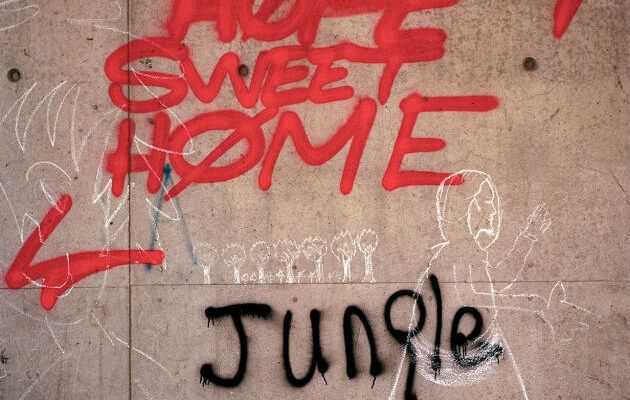In images, in picturesFor years, hundreds of refugees have crammed into makeshift settlements with the hope of boarding a ferry to Britain. From this shanty town destroyed by the State five years ago, Jean Larive has retained the traces.
October 24, 2016 marks the beginning of the erasure of the “jungle”, this clandestine Calais, never inscribed on a map. This Monday morning, the first columns of Sudanese, Afghans, Eritreans, Syrians or Iraqis left their town of tin and wood. Exhausted by months of survival, they gave up attempting to cross the Channel against the promise that their asylum application would be studied somewhere in France and that, during this investigation, they would be decently housed. The public authorities, which for months had refused to grant asylum to refugees stranded in Calais in order to dismantle the slum, won their battle of persuasion that day.
Seven months before the 2017 presidential election, François Hollande – who has not yet announced whether or not he will run for a second term – wants to shave this “Jungle”, the largest slum in France. In three days, the informal habitat, where some 10,000 exiles crowd before trying to reach England, is wiped off the map. Its cafes, its schools, its places of culture and art, and also its churches and mosques, everything vanishes. No sooner have the migrants left a neighborhood than the mechanical shovels take action.
Five years later, the moor regained its rights. From the daily life of these thousands of exiles in Calais, there are still those memories and scenes that Jean Larive’s lens immortalized in 2015 and 2016. “My first intention while working on this place was to take fragments of the“ jungle ”, elements of detail, carrying an expression, an individual intention, explains the 52-year-old photographer. At a time when we were talking about migrants in a very globalized way, it seemed important to me to give these women and men a little individuality by focusing on gestures that are sometimes microscopic, but loaded with emotion. personal. ”
These unpublished pictures are part of his series the Calais of the birds. Initially, the photographic mission was launched by the Urban Research Exploration Center (the Perou association) before becoming a public commission from the National Center for Plastic Arts (CNAP), depending on the Ministry of Culture. The documentary photographer is amused to have found himself at the heart of a state paradox. “On the one hand, the Ministry of Culture wanted to document this period, when the Ministry of the Interior did not stop doing everything to erase this world of sheet metal, wood, iron and plastic. ”
During the year of existence of the “jungle”, Jean Larive crossed its ephemeral streets: “I wanted to get as close as possible to the people by focusing on the stitching, the line, the color they put on their place of life. “ He held to this that “there is no horizon in the images” and positioned itself as close as possible to every detail. A way of signifying the absence of perspective, of the future, for these exiles stranded a few tens of kilometers from their finish line, after having traveled tens of thousands.
You have 25.74% of this article left to read. The rest is for subscribers only.
